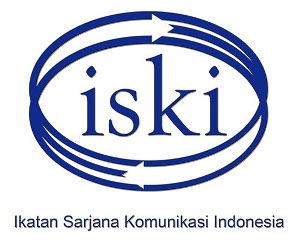OPOSISI BINER KESEJARAHAN INDONESIA PERIDOE REVOLUSI FISIK (1945-1949) DALAM FILM SOEGIJA (2012) & SANG KIAI (2013)
Abstract
The binary opposition is a common way to drive the story. It is a basic way of thinking in popular movies. Through the method of narrative and semiotic analysis, this research reveals how binaries and the role of Hasyim Asy'ari as the leaders of Islam and Soegijapranata as Catholic leaders in the effort to defend Indonesia's independence during the physical revolution. The semiotics square concept of Greimas is used to understand and dissect the binary opposition structures contained in the historical narratives seen in Soegija (2012) and Sang Kiai (2013).
Keywords: semiotics, movies, binary opposition, history
Full Text:
PDFReferences
Fiske, J. (2005). Reading The Popular. London: Taylor & Francis Group.
Alian. (2012). Metodologi Sejarah dan Implementasi dalam Penelitian. Palembang: Universitas Sriwijaya.
Anderson, Benedict. (1972). Java in The Time of Revolution: Occupation and Resistance, 1944-1946 . Ithaca & London: Cornell University Press.
Ankersmit, F. (2006). Historiography and Postmodernism. In K. Jenkins, The Postmodern History Reader (pp. 277-297). New York: Routledge.
Barker, C. (2004). The SAGE Dictionary of Cultural Studies. London: SAGE.
Barthes, Roland. (1977). Image, Music, Text. London: Fontana Press.
Barthes, Roland. (1972). Mythologies. Paris: Jonathan Cape Ltd.
Beau, B. F. (1997). Historiography Meets Historiophoty: The Peril and Promise of Rendering The Past on Film. American Studies Vol 38 (1) , 151-155.
Bingham, D. (2010). Whose Lives are They Anyway? The Biopic as Contemporary Film Genre. New Jersey: Rutgers University Press.
Brahmantyo, K. (2016). Sejarah Publik dan Agen Perubahan. Jakarta: Koran Tempo 29 Januari 2016.
Budniakiewicz, T. (1992). Fundamentals of Story Logic: Introduction to Greimassian Semiotics. John Benjamins Publishing Company: Amsterdam/Philadelphia.
Chandler, D. (2002). Semiotics: The Basic. New York: Routledge.
Danesi, M. (2009). Dictionary of Media and Communications. New York: M.E. Sharpe Inc.
Deliege, R. (2004). Levi-Staruss Today: An Introduction to Structural Antrophology. New York: Berg.
Edwards, M. (2003). Key Ideas in Media. London: Nelson Thornes Ltd.
Greimas, A. J. (1987). On Meaning: Selected Writings in Semiotic Theory. London: Frances Pinter.
Hall, J. (2006). Opposites Attract: Politics and Romance in The Way We were and Speechless. Quarterly Review of Film and Video, Volume 23 , 155-169.
Hesling, W. (2001). The Past as Story; The Narrative Structure of Histrorical Films. European Journal of Cultural Studies 4 (2) , 189-205.
Jenkins, K. (2003). Refiguring History. London: Routledge.
Kartodirdjo, S. (1983). Pendekatan Ilmu Sosial Dalam Metodologi Sejarah. Jakarta: Gramedia Pustaka Utama.
Kuntowijoyo. (2003). Metodologi Sejarah. Yogyakarta:Tiara Wacana.
Luxemburg, J. V., Bal, M., & Weststeijen, W. G. (1984). Pengantar Ilmu Sastra. Jakarta: Gramedia.
Martin, B., & Ringham, F. (2000). Dictionary of Semiotics. London: Cassell.
Nichols, B. (1985). Movies and Methods Volume II An Anthology. London: University of California Press.
Propp, V. (1968). Morphology of The Folktale. Austin-London: University of Texas Press.
Ramirez, B. (1999). Clio in Words and in Motion: Practices of Narrating the Past. Journal of American History Vol 86 , 1002.
Subanar, B. (2003). Kesaksian Revolusioner Seorang Uskup Di Masa Perang: Catatan Harian MGR. A. Soegijapranata, SJ 13 Februari 1947 - 17 Agustus 1949. Yogyakarta: Galang Offset.
White, Hayden. (1988). Historiography and Historiopothy. The American Historical Review Vol. 93 (5) , 1193-1199.
Zed, M. (2001). Menggugat Tirani Sejarah Nasional Suatu Telaah Pendahuluan Tentang Wacana Sejarah Nasional Dalam Perspektif Perbandingan. Disampaikan Dalam Konfrensi Nasional Sejarah Indonesia VII, (p. 3). Jakarta.
DOI: http://dx.doi.org/10.30813/s:jk.v11i1.955
Refbacks
- There are currently no refbacks.
Copyright (c) 2017 SEMIOTIKA: Jurnal Komunikasi
Publisher
Editorial Board SEMIOTIKA: Jurnal Komunikasi
Department of Communication
Faculty of Social Science and Humanities
"UNIVERSITAS BUNDA MULIA"
Lodan Raya St No.2, North Jakarta 14430
Phone: +62 21 692 9090 ext. 348
Email: SEMIOTIKA@ubm.ac.id













